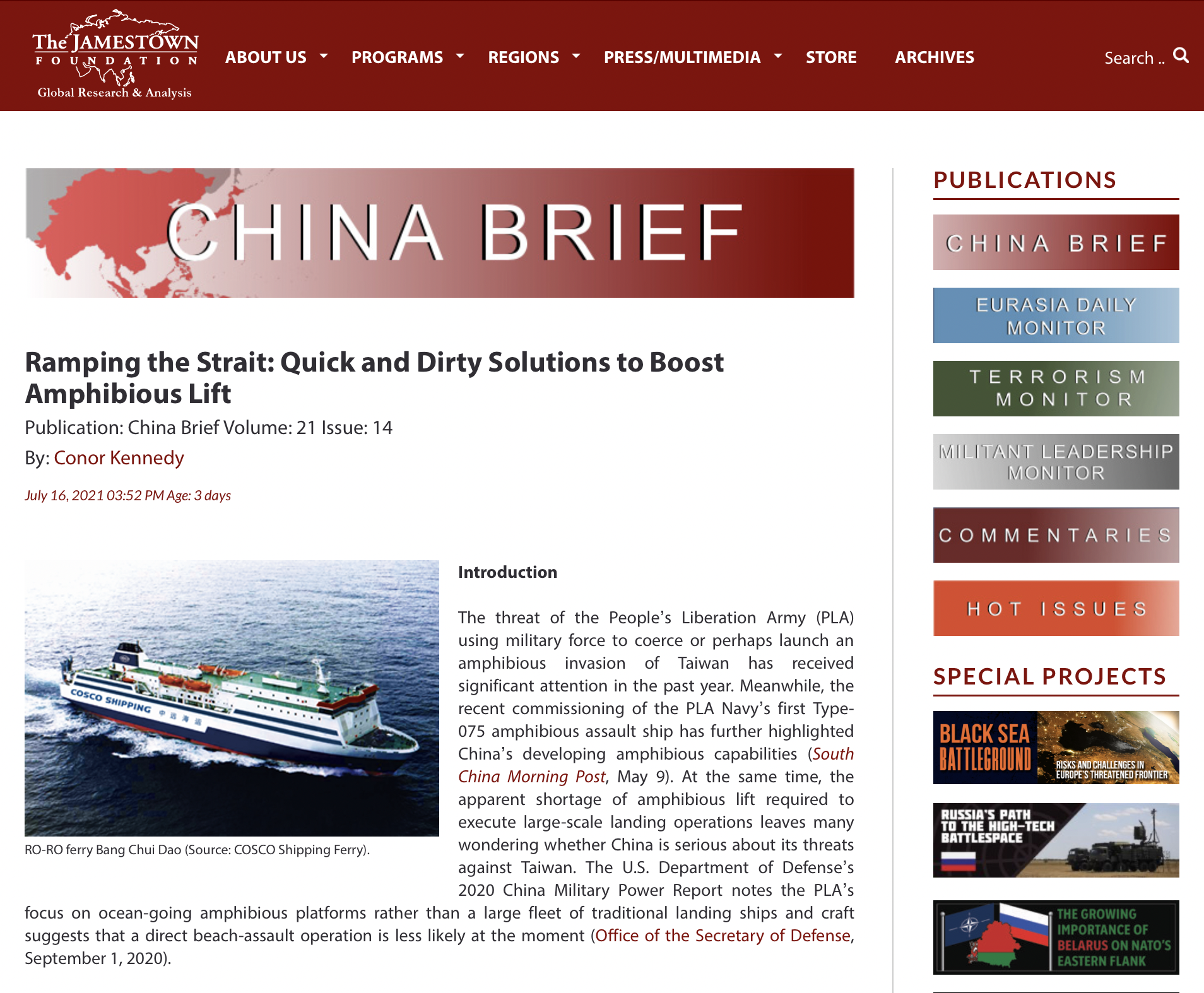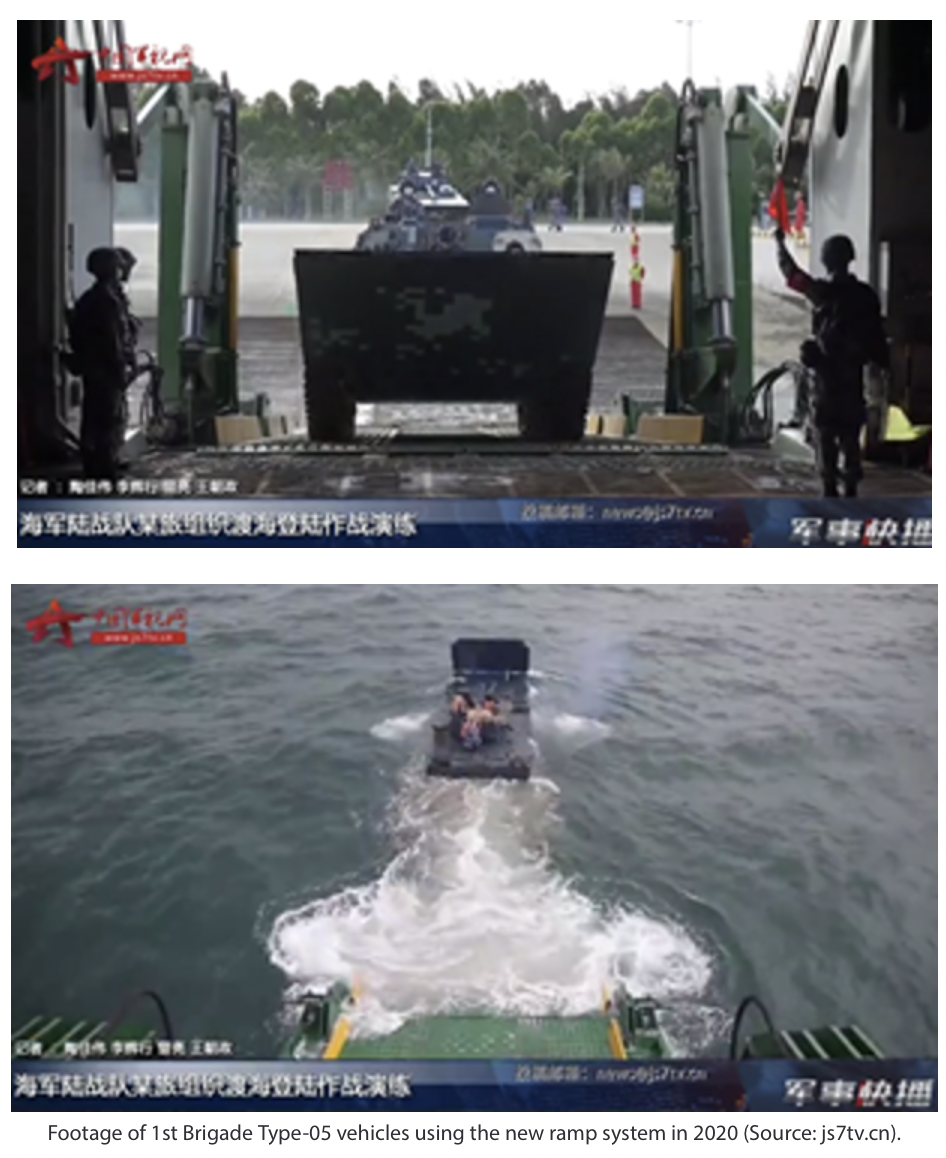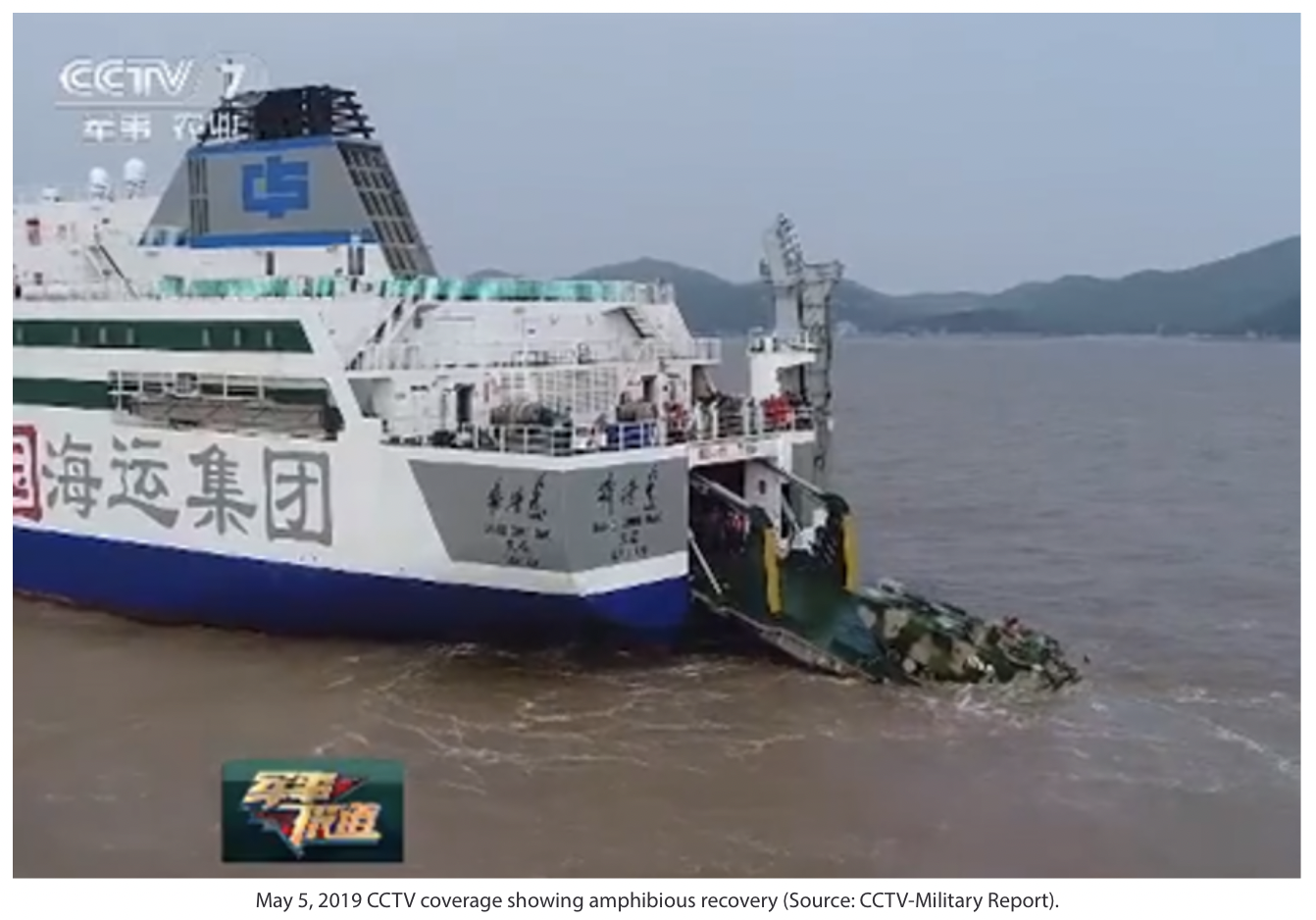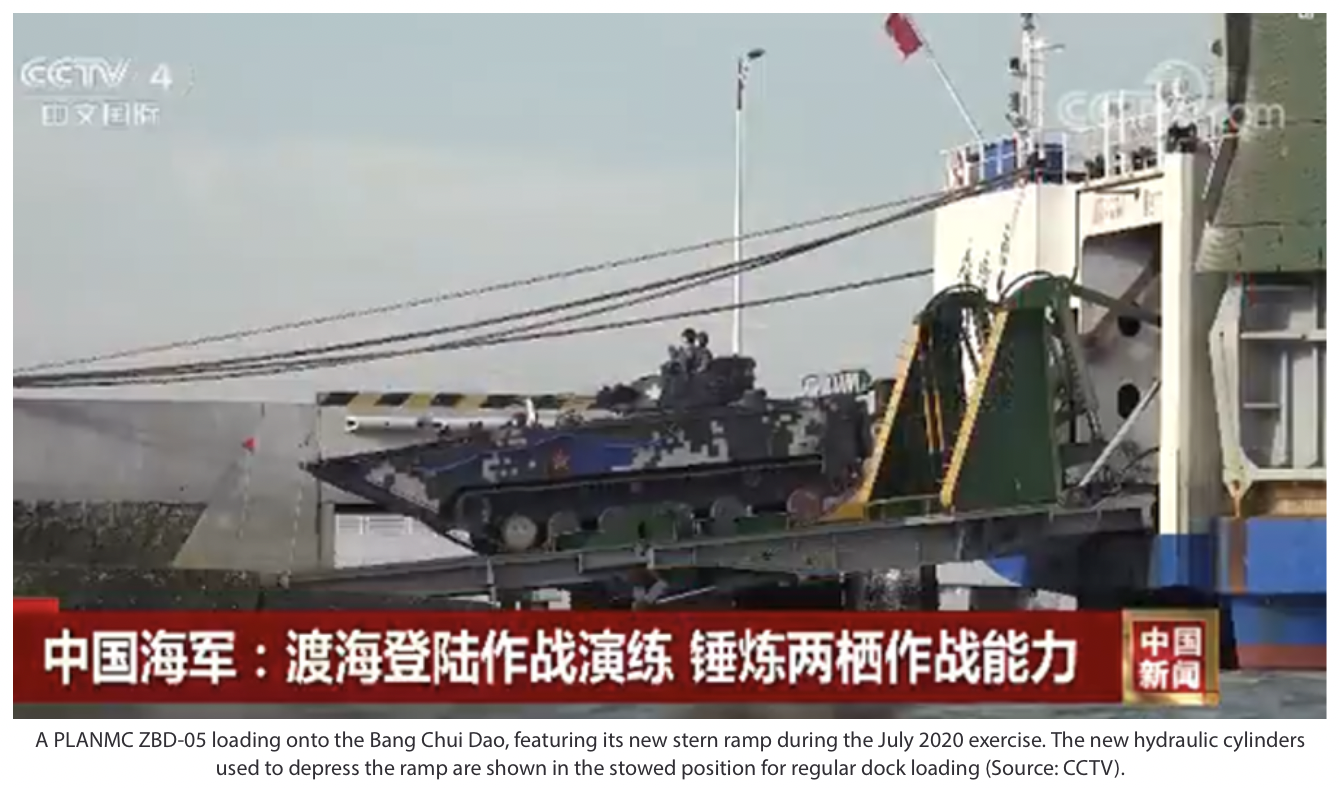Ramping the Strait: Quick and Dirty Solutions to Boost Amphibious Lift
Conor Kennedy, “Ramping the Strait: Quick and Dirty Solutions to Boost Amphibious Lift,” Jamestown China Brief 21.14 (16 July 2021).
Introduction
The threat of the People’s Liberation Army (PLA) using military force to coerce or perhaps launch an amphibious invasion of Taiwan has received significant attention in the past year. Meanwhile, the recent commissioning of the PLA Navy’s first Type-075 amphibious assault ship has further highlighted China’s developing amphibious capabilities (South China Morning Post, May 9). At the same time, the apparent shortage of amphibious lift required to execute large-scale landing operations leaves many wondering whether China is serious about its threats against Taiwan. The U.S. Department of Defense’s 2020 China Military Power Report notes the PLA’s focus on ocean-going amphibious platforms rather than a large fleet of traditional landing ships and craft suggests that a direct beach-assault operation is less likely at the moment (Office of the Secretary of Defense, September 1, 2020).
But the PLA may have other plans for transporting troops and equipment across the Strait: the growing capabilities of its merchant roll on-roll off (RO-RO) ships (CMSI, December 6, 2019). These are vessels equipped with built-in ramps that enable wheeled and tracked cargo to load and offload under their own power. Such ships have the potential to deliver a significant volume of force, providing access to port terminals or other lighterage is available. They do not, however, provide solutions for launching waves of amphibious assault forces, for which dedicated landing ships are still lacking. Among the numerous critical components necessary for a successful cross-Strait landing, a failure to secure landing areas for follow-on forces in the initial assault would bring the entire endeavor to a screeching halt, likely inflicting severe costs on the part of the aggressor and resulting in a withdrawal.
For China’s RO-RO ships to support an amphibious assault scenario, their ramps would need to be capable of in-water operations to launch amphibious combat vehicles. This capability appears to have been publicly demonstrated in the summer of 2020 by the PRC-flagged vessel Bang Chui Dao (棒棰岛), a 15,560-ton RO-RO owned and operated by COSCO Shipping Ferry Company (COSCO Shipping Ferry, accessed June 24). This article describes a new ramp system observed on this ship during a recent exercise and discusses its implications for PLA amphibious capabilities in a cross-Strait landing.
New Ramp System Demonstrated in Amphibious Landing Exercises
During the peak of summer training in 2020, the 1st Marine Brigade of the PLA Navy Marine Corps (PLANMC) mustered all personnel and equipment (全员, 全装, quan yuan, quan zhuang) for day and night landing exercises in amphibious training areas off the coast of Guangdong Province. These exercises featured night-time mobilization and assembly, embarkation, obstacle clearance, amphibious assault landings, and artillery and air defense training (js7tv.cn, August 2, 2020). They also included the use of a new ship to carry these forces to their training area.
On July 10, the Bang Chui Dao, which usually runs ferry routes across the Yellow Sea and Bohai Gulf, arrived in Zhanjiang (湛江) to join the PLANMC exercise. It took on 1st Brigade troops, trucks, and Type-05 amphibious armored vehicles at the Southern Theater Navy’s 6th Landing Ship Flotilla loading dock (CCTV, August 3, 2020). According to automatic identification system (AIS) transmission data of the vessel’s movements, the ship departed Zhanjiang just before 10:00 AM local time and arrived off Tangxia (塘霞), an amphibious training area in Dianbai County (电白区), at almost 4:00 PM. AIS data indicates that it likely began launching vehicles 4 to 5 kilometers (2.5 to 3.1 miles) offshore without dropping anchor. Video of a vehicle launching shows the ship was likely running slow into the wind to maintain a lee astern; it appears to have maintained bare steerage while drifting to the southeast at half a knot until offloading was completed and then departed for nearby Shuidong Harbor at around 4:48 PM.[1] After being moored dockside overnight and well into the next day, the ship then left for the Shuidong anchorage on the evening of July 11. It returned to Zhanjiang in the afternoon of July 12, presumably to offload PLANMC forces. Although it is unclear how many PLAN landing ships took part, at least one Type-073A landing ship likely participated (CCTV, August 3, 2020). … … …









































